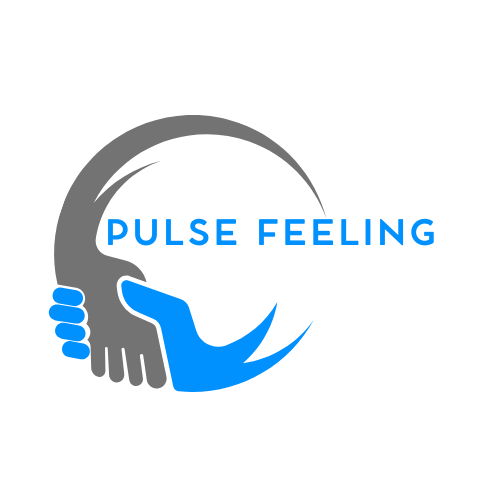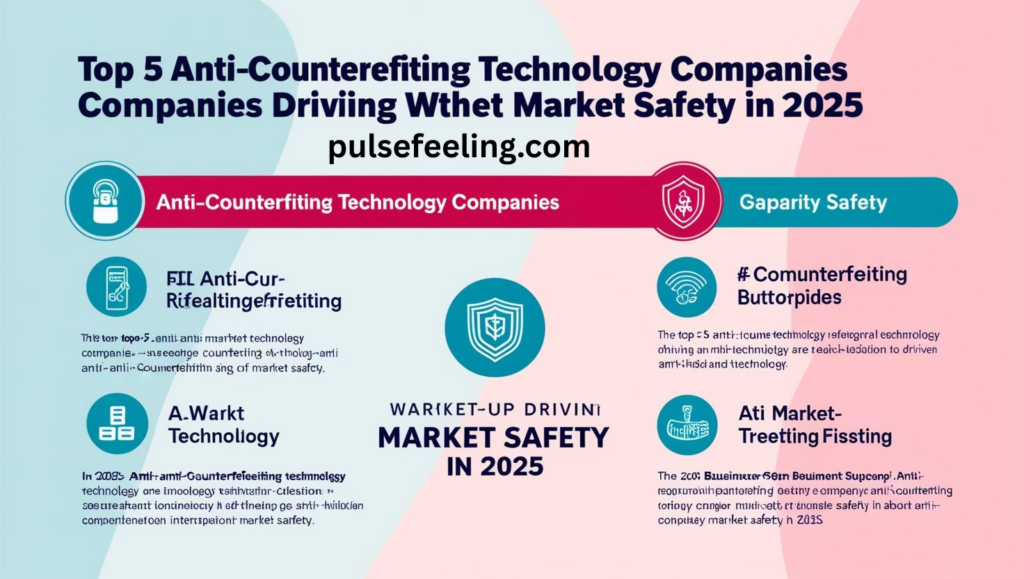Counterfeiting remains an increasing concern in world markets, with fraudulent products endangering buyers and costing businesses billions yearly Anti counterfeiting technology companies are making the charge against this illegal trade by developing innovative solutions
that save brands and buyers. A comprehensive conductor surveys the top players in the industry, emerging technologies, and how businesses can support these solutions to save their products and reputation.
What Are Anti Counterfeiting Technology Companies and How Do They Work?
Anti counterfeiting technology companies specialize in developing advanced systems to search, stop, and remove fraudulent products across many industries. These firms employ a merger of cutting-edge technologies, including:
- Track-and-trace systems (QR codes, RFID tags)
- Holographic security labels
- Blockchain-based verification
- AI-powered authentication tools
- Microprinting and nano-engraving
These solutions work together to generate multiple layers of security, making it progressively difficult for counterfeiters to replicate products successfully. The primary goal of these companies is to help businesses safeguard their supply chains, verify product originality, and keep buyer trust in their brands.
Exploring the Different Types of Counterfeiting in 2025Product Counterfeiting: Imitation Goods and Fake Brands
From luxury handbags to everyday consumer goods, counterfeiters keep on flooding markets with low-quality imitations. Anti counterfeiting technology companies combat this through quality wrapping solutions and digital confirmation methods that make genuine products easily recognizable.
Document Forgery: Counterfeit IDs, Passports, and Certificates
The market for fake documents remains robust, enabling various illegal activities. Leading anti counterfeiting technology companies are implementing biometric verification systems and microprinting techniques to detect sophisticated forgeries.
How Anti Counterfeiting Technology Companies Combat Currency Fraud
Modern banknote authentication technologies, including color-shifting ink and holographic strips, are helping economic organizations point out counterfeit money more successfully than ever earlier than.
Pharmaceutical Counterfeiting: Risks in Fake Medicines
Perhaps the almost dangerous form of counterfeiting, copy medications pose important health risks. Anti counterfeiting technology companies are applying serialization systems and blockchain tracking to confirm drug security all over the provide chain.
Electronics Counterfeiting: Cloned Devices and Components
The electronics industry faces notable dangers from counterfeit components that threaten product presentation and safety. Innovative safety markers and embedded authentication technologies are helping manufacturers save their products.
How Can Businesses Benefit from Anti Counterfeiting Technology Companies?
Enhanced Brand Protection
By partnering with anti counterfeiting technology companies, businesses can notably lower procurement loss from counterfeit products while saving their brand reputation.
How Anti Counterfeiting Technology Companies Improve Supply Chain Security
Modern searching technologies offer complete visibility all over the supply chain, helping businesses recognize and eliminate vulnerabilities where counterfeiting might occur.
Increased Consumer Trust
Authentication systems that permit buyers to simply verify product validity are becoming necessary tools for building and keeping customer loyalty in today’s market.
Which 5 Anti-Counterfeiting Technology Companies Are Leading the Industry?
The fight against counterfeiting is being led by innovative companies that are pushing the limits of authentication technology. Here are five industry leaders making notable changes in 2025:
- SecureMark Solutions – Pioneers in holographic labeling and AI-powered verification systems
- AuthChain Technologies – Blockchain experts creating tamper-proof product histories
- TraceGuard Innovations – Specialists in RFID and IoT-based tracking solutions
- VerifiGlobal – Leaders in mobile authentication and consumer verification apps
- PharmaSecure – Focused exclusively on pharmaceutical authentication technologies
Each of these companies offers unique solutions tailored to specific industry needs, from luxury goods to life-saving medications.
The Future of Anti Counterfeiting Technology in Global Trade
Future of Anti-Counterfeiting Technology
Emerging technologies are transforming product protection:
- AI & Machine Learning: Enable predictive counterfeit detection by analyzing data patterns
- Biometric Markers: Create unclonable product identifiers for high-value items
- Smart Packaging: Features tamper-evident labels and self-destruct mechanisms
- Blockchain: Provides permanent, verifiable product journey records
- AR Verification: Allows instant authentication via smartphone cameras
The Critical Role in Online Shopping Security
E-commerce platforms face unique challenges in combating counterfeit goods, but anti counterfeiting technology companies are developing specialized solutions:
AI-Powered Image Recognition systems scan thousands of product listings daily, identifying potential counterfeits by comparing images against authentic product databases. These systems can detect subtle differences in wrapping, logos, and even product shapes that might indicate fraud .
Digital Serialization assigns special identifiers to each product unit, generating a digital fingerprint that follows the item all over the entire supply chain. This permits brands to search products from the factory to the buyer and recognize unauthorized resellers.
Blockchain-Enabled Marketplaces are emerging where every product listing must be verified against a blockchain record before appearing for sale. This generates a more trustworthy online shopping habitat where buyers can be confident they’re purchasing good items.
Dynamic Pricing Algorithms help recognize counterfeit sellers who typically provide products at suspiciously low prices. These systems can automatically flag or detach listings that fall outside expected price ranges for authentic goods.
As online shopping continues to grow, these technologies will become increasingly mainstream in keeping buyer trust in e-commerce platforms.
How to Choose the Right Anti Counterfeiting Solution
When choosing anti-counterfeiting technology, review these key factors:
- Security Needs – Match protection level to product value and risk
- Implementation – Choose solutions compatible with existing operations
- Cost-Benefit – Balance upfront costs with long-term protection value
- User Experience – Ensure easy verification for customers
- Scalability – Select systems that can grow with your business
- Compliance – Verify solutions meet industry regulations
Conclusion
Anti counterfeiting technology companies offer key solutions to combat increasing counterfeit threats. By leveraging modern tools such as AI, blockchain, and genius searching, businesses can save their products, keep buyer trust, and safe their brand reputation. Staying ahead of counterfeiters needs continuous innovation, making these technologies necessary for long-term business success
FAQs
Q1: How fast can anti-counterfeiting technologies be implemented?
Depending on the complexity and existing infrastructure, most solutions can be integrated within weeks or months.
Q2: Are these technologies costly for small businesses?
Many suppliers now provide scalable solutions that can be tailored to businesses of any size, with pricing models that make sense for smaller performance.
Q3: How do buyers typically verify product originality?
Methods vary, but many require scanning QR codes, using authentication apps, or checking special serial numbers on manufacturer websites.
Q4: Can these technologies stop counterfeiting completely?
While no solution provides 100% solution, advanced technologies make counterfeiting notably more difficult and simple to detect.
Q5: How many anti-counterfeiting measures should be updated?
Best practice is to analysis and update safety qualities annually or whenever new threats emerge in your market.



